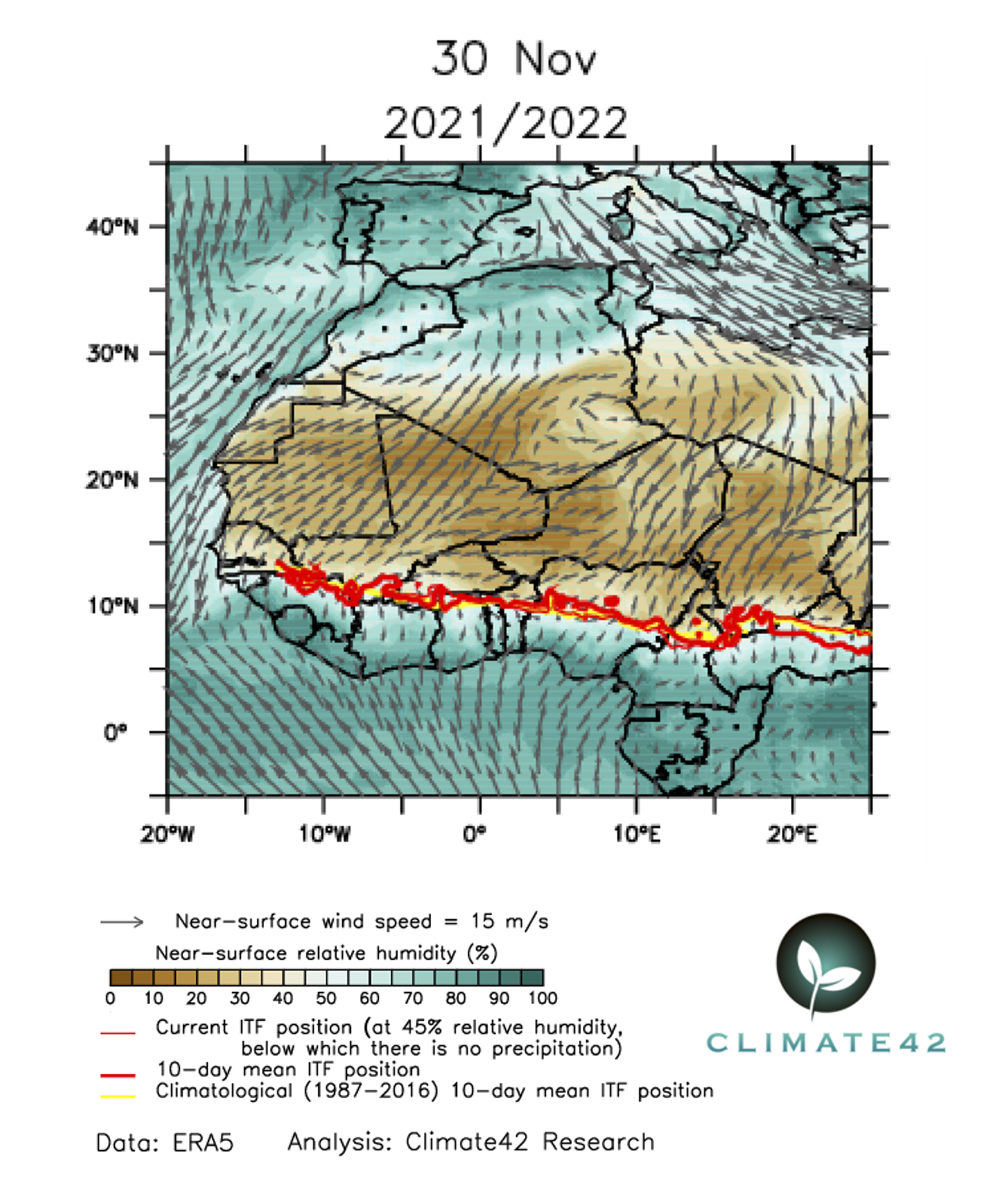December 10, 2021

The ITF has been lagging slightly behind its normal position throughout most of the past month, only catching up to it in late November. By the end of the month, the ITF was located right along its average position for this time of the year: near the northern borders of Ivory Coast and Ghana, almost, but not quite, mid-way through Nigeria and around 8°N in Cameroon – far enough from the cocoa regions not to pose any threat to the cocoa trees.
Even if, in line with our predictions, the crops are safe from the negative consequences of the harmattan for the time being, and December should not pose a significant threat either, the mid-crop could still suffer some losses from the harmattan later in the season.
With the current hydric resilience of the trees, in the Ivorian hinterland, wilting of part of the mid-crop may be expected from late December onward with each harmattan event. In eastern coastal Ghana and southern Cameroon, trees will be able to cope with harmattan episodes up to late January without consequences but their mid-crop would suffer greatly from later occurrences of the harmattan. In the rest of West Africa, the mid-crop potential should not be reduced by the long dry season as long as the harmattan conditions are not harsher than average.
Read More
Related Posts
Our Harmattan February Update
In January, we saw two major movements southwards of the ITF, which is a proxy for the southernmost reach of the harmattan. This intense harmattan activity was not expected, so we took this as an opportunity to check in with crop developments throughout the cocoa belt...
Harmattan Seasonal Prediction: Oct’21
The harmattan is a dry, northeasterly desert wind that blows from the Sahara. It sometimes reaches the African cocoa regions during the Northern Hemisphere winter, drying the plants and soil and hindering precipitation. If persistent, it can be devastating to the...
Black Pod Assessment: Sept’21
The rainfalls during the little dry season allowed the pathogen responsible for black pod disease to survive in the plantations. Consequently, it was well positioned to promptly flare up when rains returned in late August. Furthermore, the warm and moist conditions...



